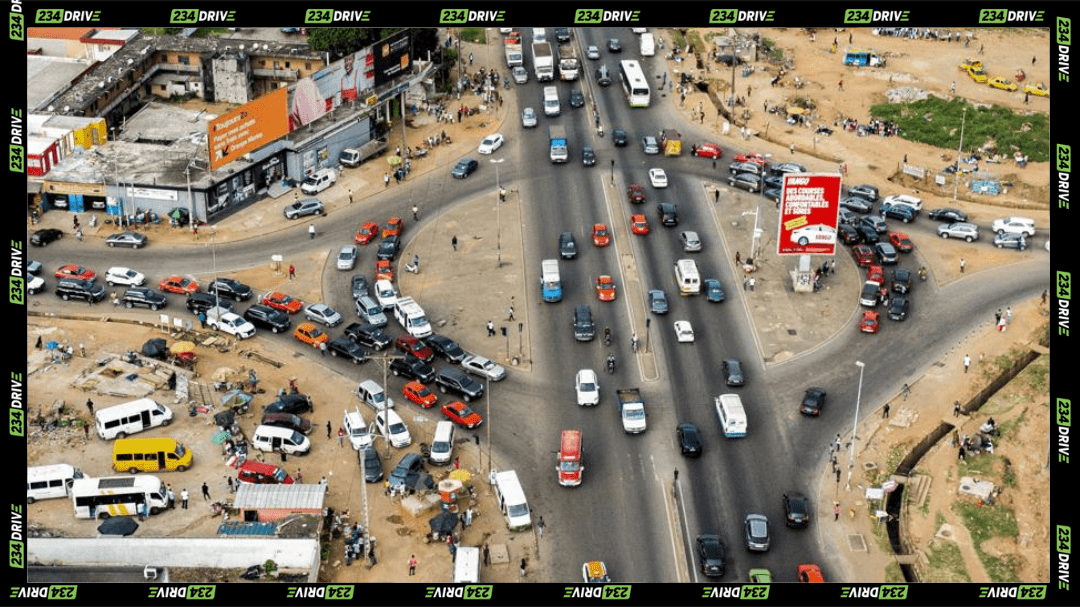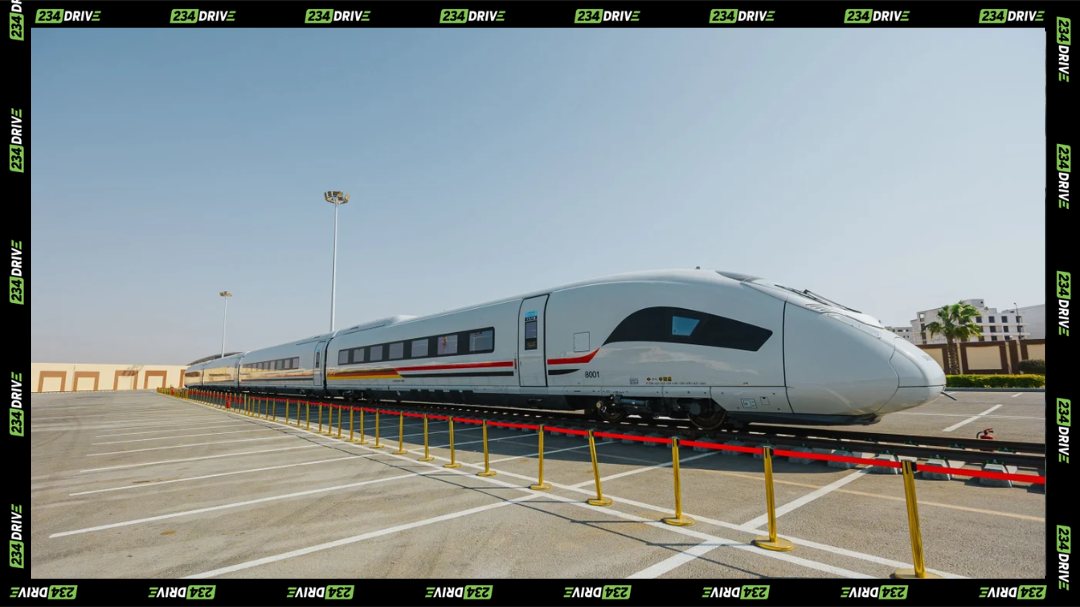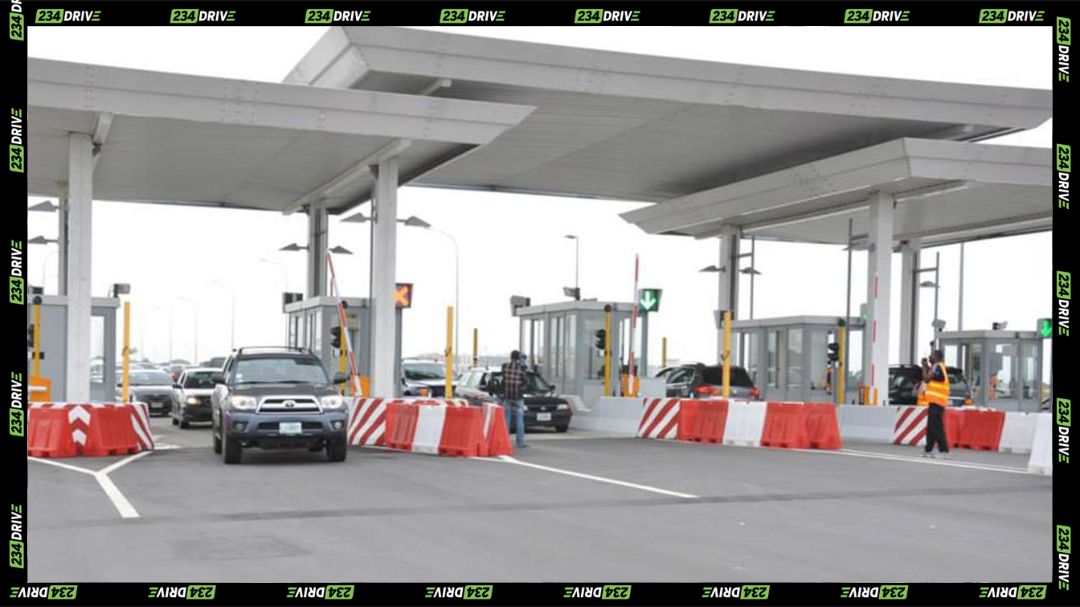South Africa’s hijacking surge is shifting to business fleets, with new hotspots emerging across the country. | Source: Moonstone
South Africa is facing an inclining trajectory in hijacking trends, with business-owned vehicles now carrying the highest risk. 234Drive dug through Tracker South Africa’s latest vehicle crime analysis—based on more than 1.1 million subscriptions between January and June 2025. The data shows business vehicles face a 48% higher risk of hijacking than privately owned ones, and Mpumalanga now emerges as a new hotspot alongside Gauteng, the Western Cape, and the Eastern Cape.
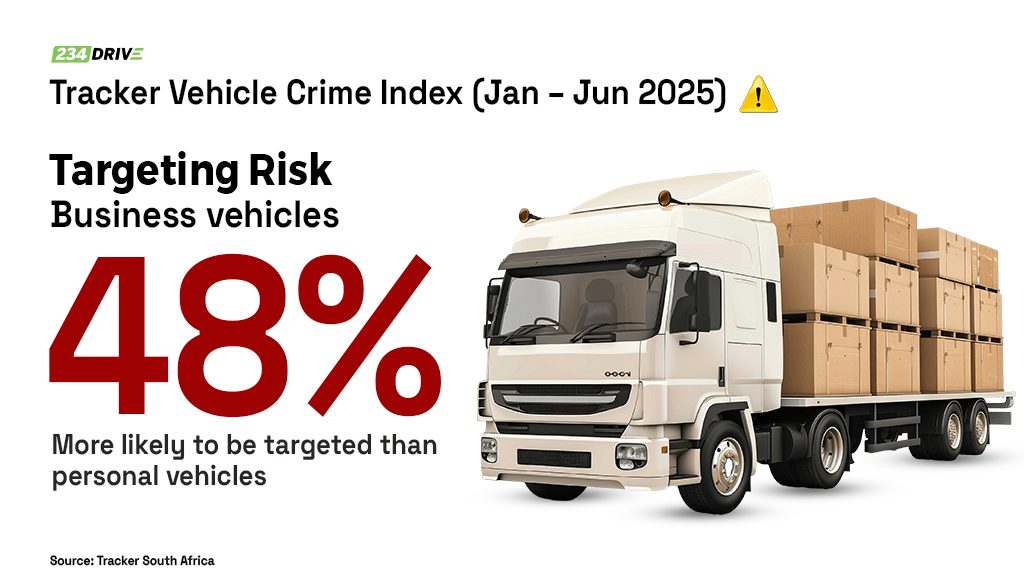
The headline change is that hijacking in South Africa has overtaken traditional vehicle theft as the main threat, especially for companies operating delivery and logistics fleets. Although business vehicles make up only part of Tracker’s customer base, the incidents involving them sit 32% higher than expected, and they are hijacked almost twice as often as they are stolen. Gauteng remains the centre of vehicle crime at 57%, but the rise in Mpumalanga marks one of the most significant developments in current hijacking patterns.
What Makes Hijacking Different From Theft in South Africa
Hijacking involves taking a vehicle directly from a driver through force, while theft happens when the vehicle is taken without confrontation.
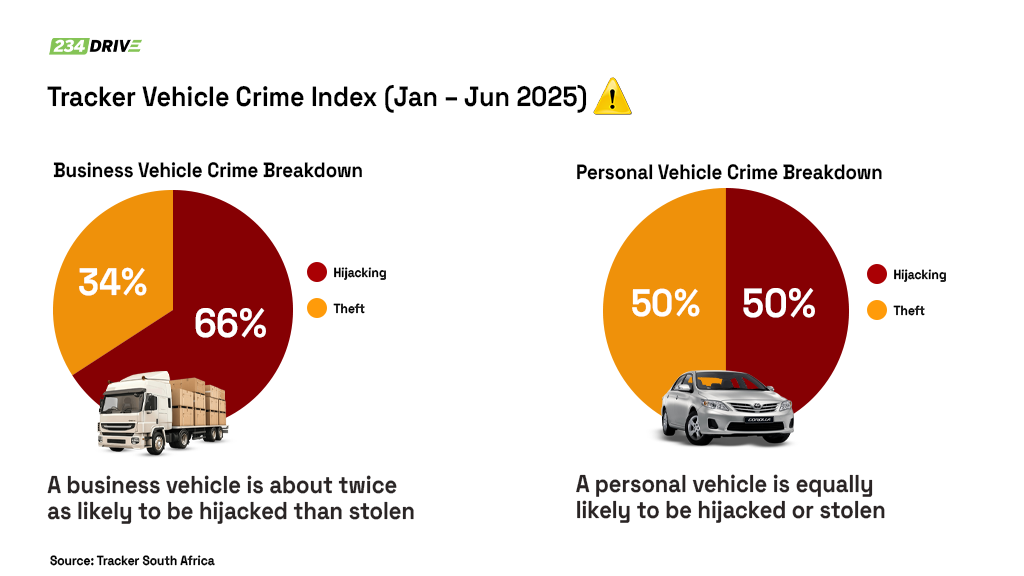
The new data from South Africa shows a decisive move toward hijacking, especially for business fleets that follow predictable routes and carry valuable goods. In the Western Cape, a business-owned vehicle is five times more likely to face hijacking than theft. In the Eastern Cape, the rate is four times higher, and in Mpumalanga, hijacking occurs at three times the rate of theft.
For privately owned vehicles, the national picture is a bit more balanced between hijacking and theft, but regional differences highlight the hotspots. In the Eastern Cape, a personal vehicle is five times more likely to be hijacked. In Mpumalanga and Limpopo, the hijacking rate is roughly double the theft rate.
Why Hijacking in South Africa Is Increasing for Businesses
Tracker COO Duma Ngcobo notes that criminal groups adapt quickly to patterns in South Africa’s transport and delivery networks. More hijackings now happen during the week, when business vehicles are most active, showing that criminal elements are tracking fleet movements rather than relying on weekend opportunities.
Safety Measures Against Hijacking Amid National Stats
Businesses are encouraged to use layered protection such as AI-powered dashcams, 360-degree monitoring, safe-zone alerts, cargo sensors, and emergency driver support. Rapid-response armed assistance can also reduce harm during hijacking incidents.
SAPS recorded 4,533 hijackings in three months, a year-on-year drop of 15.1%, but still equal to around 50 hijackings per day. The Victims of Crime survey suggests the real scale is much larger, estimating 81,000 hijackings in the past year, or an average of 222 hijackings per day across South Africa.
Experts say the most effective protection is basic awareness. Most hijacking cases happen when drivers are distracted, usually at intersections, driveways or in slow traffic. Staying alert sounds simple, but it makes a real difference.





